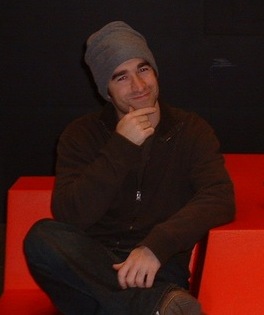The Horrendous Space Kablooie!
Tonight we saw Simon Singh speak about his new book Big Bang: The Origin of the Universe (not to be confused with Nerve's new book The Big Bang: Nerve's Guide to the New Sexual Universe) as part of the continuing Seattle Science Lectures Series at Town Hall. As you can probably guess from the title, the focus of his new book is the Big Bang theory, but what's interesting about the book is that in addition to walking you through the theory itself, Singh also tells the story of how the theory came about and the various trials and tribulations it went through before becoming widely accepted.
The Big Bang theory was first originated by Georges LeMaitre (although he didn't coin the term). In addition to studying physics, LeMaitre was also a monsignor in the Catholic church. LeMaitre was the first to suggest that the universe was born at a single instant in the past and has been expanding outward ever since. At first his ideas were rejected (even by Einstein) as a creationist theory devoid of a strong scientific founding, which is somewhat ironic given that creationists are the main opponents of the theory today.
A few years later Edwin Hubble began to find data suggesting that the universe was in fact expanding, and that the objects in the universe that were furthest away were also moving the fastest. This new data seemed to provide some merit to LeMaitre's theory, but the data they were working with was still fuzzy enough to warrant doubt (as Singh put it 'bad data can be interpreted any way you want to'). The alternative theory with the most support was called the Steady-State theory. It basically proposed the idea that the universe was constantly changing, but that the universe also always came back to an identical steady state.
Over time the experimental data associated with the creation of the universe improved and allowed for better testing of the hypotheses associated with both theories. Two key predictions associated with the Big Bang that held up under the new data were the fact that 3/4's of the matter in the universe is made up of hydrogen, and the fact that the blast of radiation associated with the Big Bang would imply that a measurable amount of microwave radiation would be present in the universe. These predictions are the best evidence we have that the Big Bang theory is true, and are widely accepted as proof by most cosmologists today.
Another cool fact we learned tonight was that by using simple physics it's relatively easy to 'run back the clock' on the universe to the very first moments after the big bang. In fact we can get down to one billionth of one billionth of one billionth of one billionth of a second before our physics start to break down. Presumably at that point you start getting into quantum physics and Chaos theory (although I'm just guessing here).
One last thought I found interesting came from the question and answer session. The question was about where the center of the universe is located. It's an interesting question in that wherever you are in the universe it looks like everything is moving away from you and thus you are in the center. The reality though is that although it looks like the objects are moving away, space itself is actually expanding. The example Dr. Singh used was to think of the lecture hall growing and everyone's seats moving with it, rather than as people getting up and walking further away from each other in a constant sized room.




0 Comments:
Post a Comment
<< Home